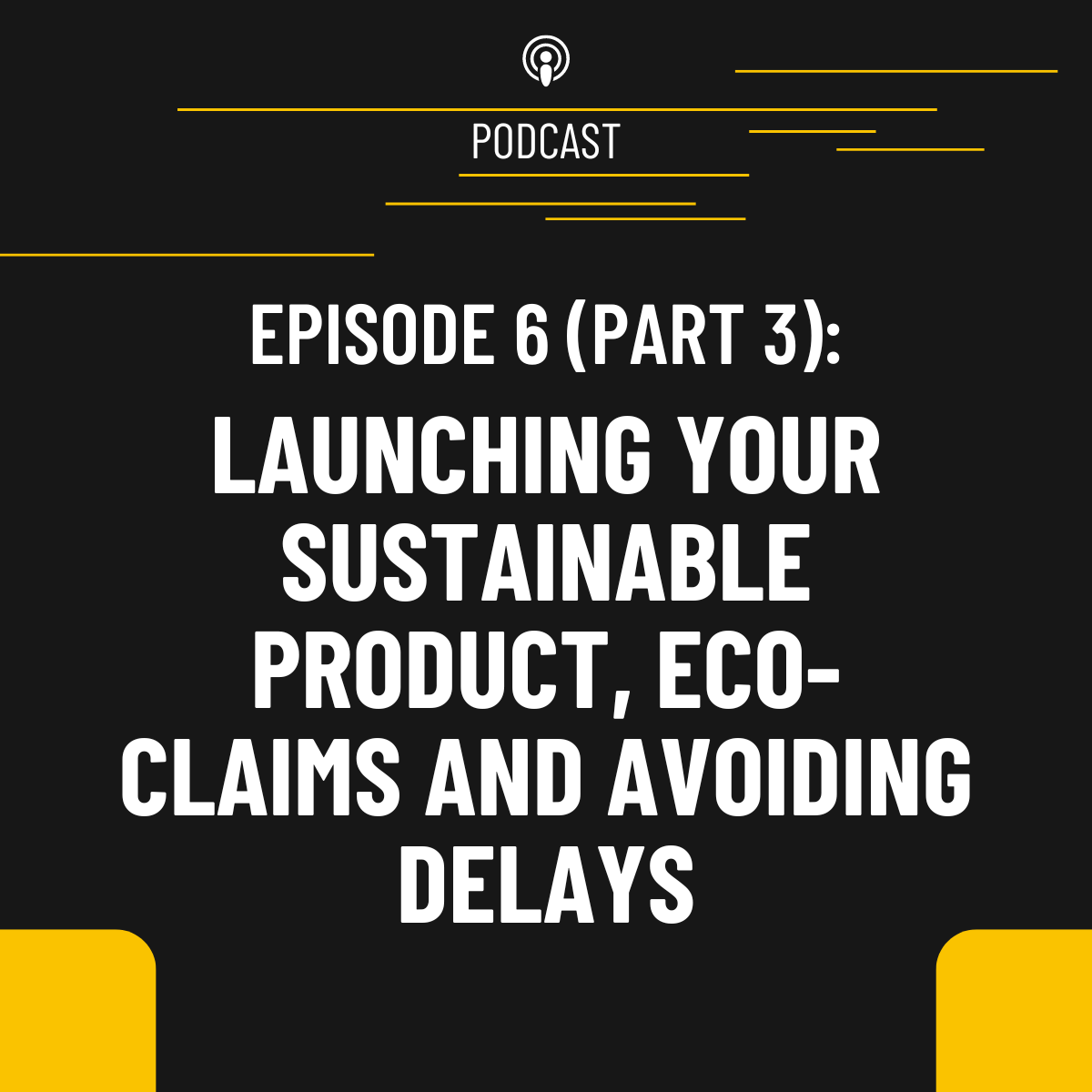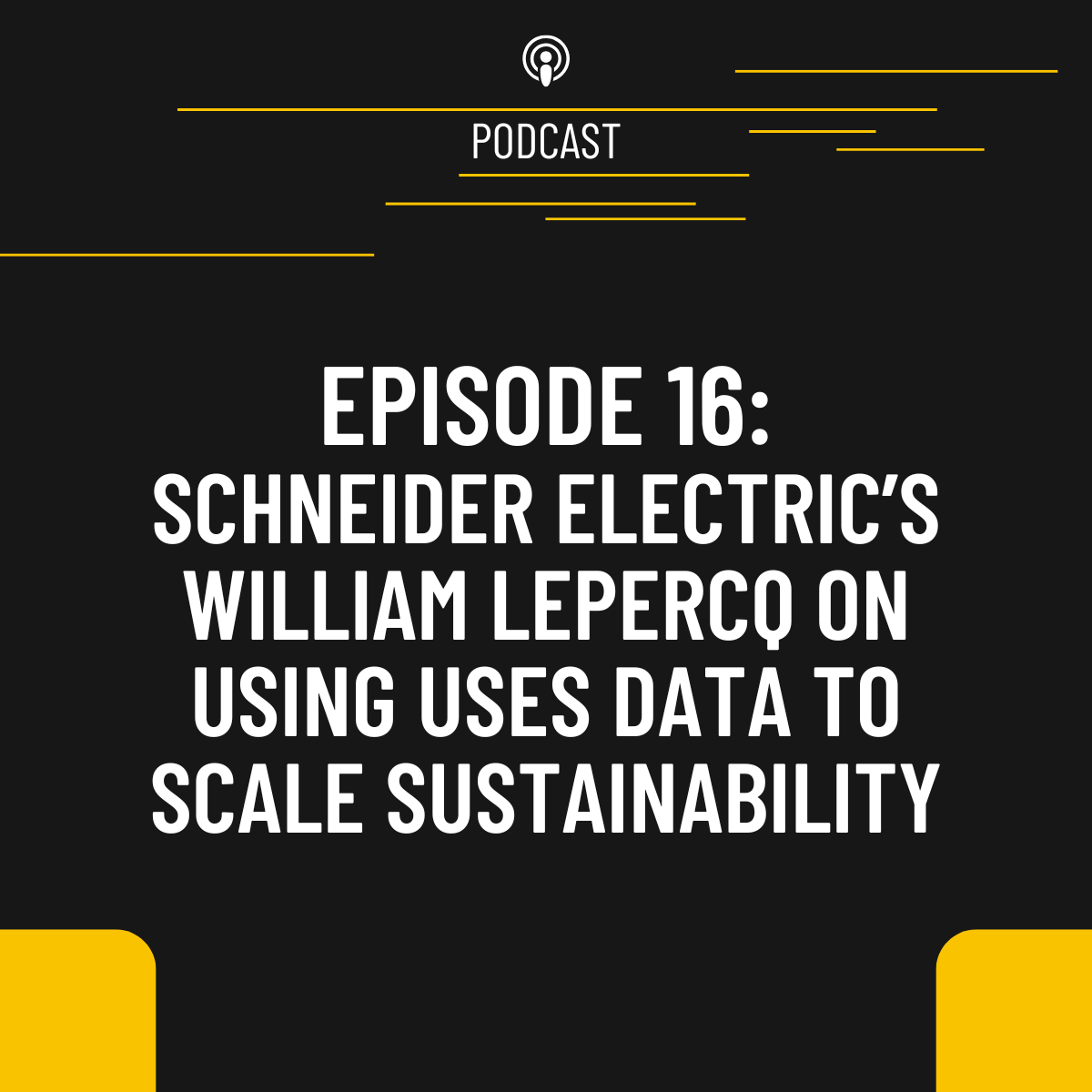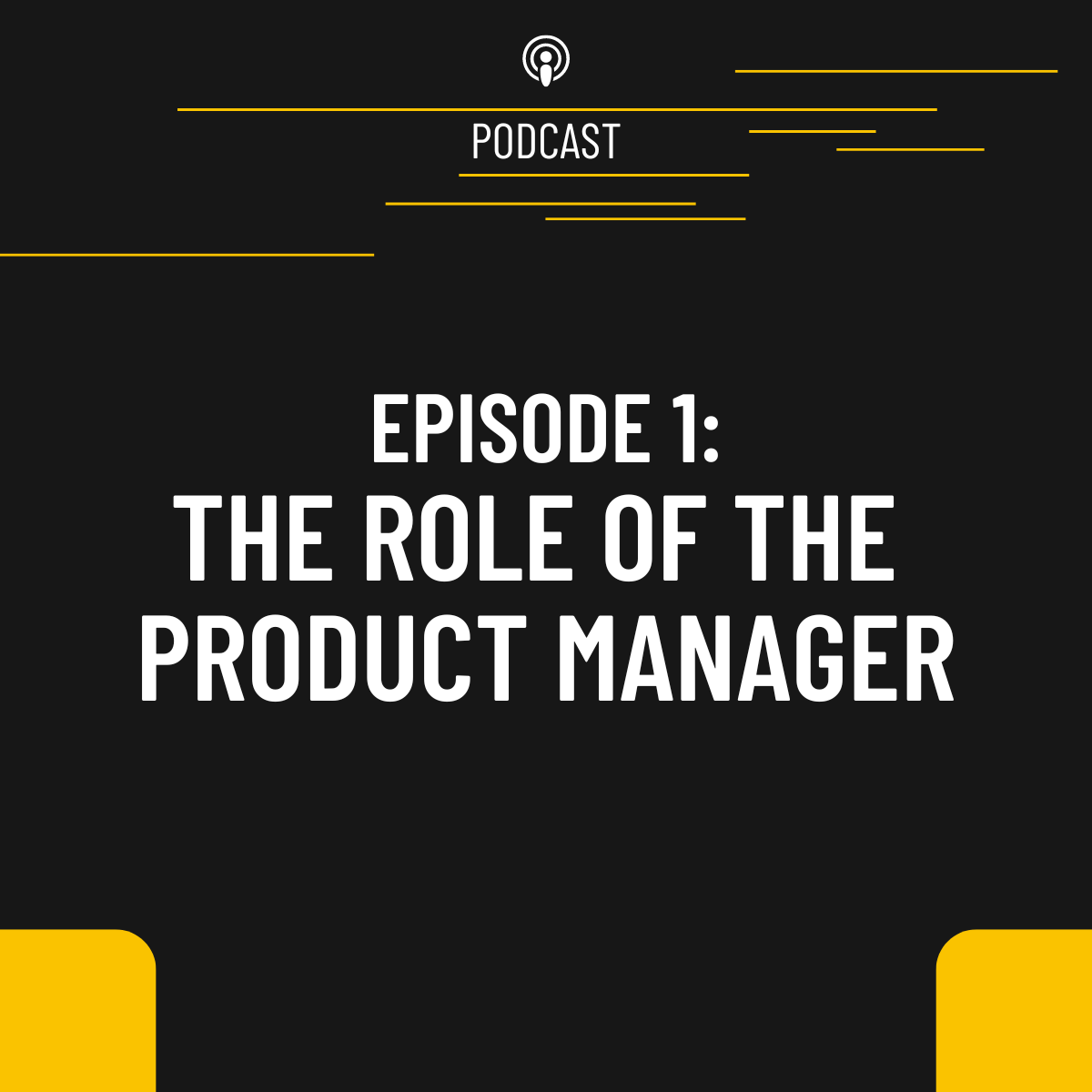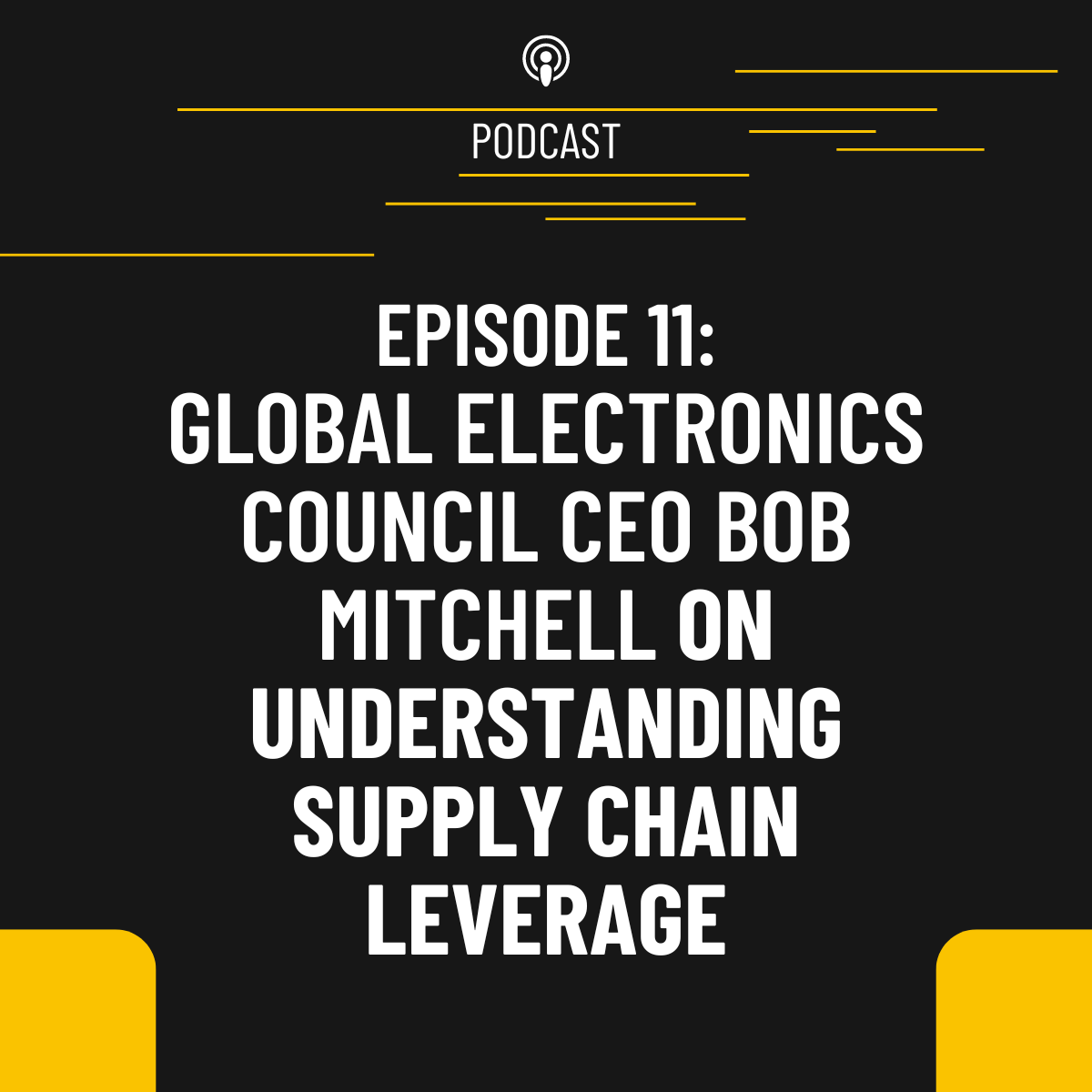Show Notes
In our latest episode, Jim, Neil and Shelley welcome special guest Bruce Uhlman. As Senior Manager, Applied Sustainability at BASF, Bruce leads their applied sustainability team in North America. BASF is the largest chemical producer in the world.
Bruce discusses the reasons why product managers need to be embedding sustainability into their products, the difficulties of accurately defining what 'sustainability' truly means, and BASF's portfolio steering framework (among a variety of other topics).
In this Episode
Shelley: This podcast is about enabling product managers to improve their ability to embed sustainability into their products. Bruce, with your experience, what are some of the reasons product managers are embedding sustainability into products? [01:15]
- Bruce: Among other topics within our companies, like safety and quality, sustainability right now is a critical aspect to get a handle on and how that's being integrated into products and engagement with customers. We have huge challenges as a society today with growing populations and climate change, and product managers need to understand how their products can contribute to resolving these issues and how, even at the product level, they're supporting their customers and helping them meet their own sustainability targets and challenges. [01:31]
- There are tools and best practices out there utilizing, say lifecycle assessment, that will gather a better, deeper insight, more science based and quantification around sustainability to take internally and work within their entire organization. [02:14]
Neil: Have you seen any examples of where product managers have done this and seen success like the way you have at BASF? [02:42]
- Bruce: Yes. I think the biggest challenge is because sustainability can be a nebulous term. It has many different meanings depending on what product you have, what your market sector is, what region of the world you're in, even how your customers and your suppliers are defining sustainability. So, you need to be able to quantify and define what sustainability means for your product and for your application. Once you've defined it, then you can measure it. Once you can measure it, then you have the data to support linking that to what's important to your customer, and also linking that to attributes that you're getting within your supply chain and down the value chain. [02:52]
- In many cases, product managers may be looking at their product in a traditional manner; looking at the technical attributes and what they've been doing previously that may have been successful. But sustainability brings a whole new perspective to things. They need to educate themselves on what these other attributes are, how sustainability is embedded within their product, and they need to be able to assess that. [03:38]
- We've developed a lot of frameworks within BASF that provide that rigorous, comprehensive, and reproducible framework. It’s also transparent on how we define, measure, and create value through these solutions. We understand where the impacts are occurring throughout the value chain, where the trade offs are occurring. [04:04]
- We need to understand both the value creation of our products and the risk. And you need this comprehensive framework of how you're integrating that in product development and how you integrate that in your communications with your customers. [04:27]
Jim: In my experience with BASF, there's been things that you've done ahead of other companies. What was the process the company went through to move from thinking about it, to BASF becoming a leader? [04:39]
- Bruce: Success and being proactive came from our senior management and from our board when we changed our branding from the chemical company to ‘we create chemistry for a sustainable future’. It brought focus into the value that our solutions, which are our products, are bringing to society and the value they create for society and for our customers. [05:12]
- Having senior management change our focus around sustainability, had the trickle-down effect throughout our entire organization that we really needed to embed sustainability into everything we do - whether it's our project approval process within operations, procurement, but specifically in product development. So we needed to understand the drivers of sustainability now at the product level and how our products are impacting sustainability, not just within our own operations, but throughout the entire value chain. [05:45]
- That's one of the benefits when we developed the sustainable solution steering [SSS] program, which enabled a product manager now to look differently. S/he wasn't just selling a chemical, but was selling a solution, a chemistry that was impacting sustainability at the customer level, at the consumer level, and having impacts upstream in supply chain and maybe downstream at the end of life. So having that structured framework enabled them to really assess things, quantify things and be able to put a line in the sand of where you are now and how you need to innovate to improve that going forward, depending on what your customer needs are and the changing market drivers. [06:23]
Jim: If I understand, with SSS you can classify your product into one of five categories and I think Pioneer is the number one, and I think Challenge is the bottom. It seemed to me that that became an internal driver for change. But if I'm a product manager and my product falls into the Accelerator/Pioneer category, I'm going to get more investment money and looking better in the company. If I'm product manager on a Challenge product down at the bottom, what does that mean to me? Is that a catalyst to change? Am I more likely to change because of that? [07:03]
- Bruce: As I mentioned before and as you pointed out, having that structured framework of how you're assessing your product in the region that you are, because there could be different regulations, different customer demands, the competitive landscape could be different - are influencing whether your product has a distinct advantage out there or maybe there are some challenges that you see from the competitive or regulatory side. You need to be able to identify those and then put a game plan in place in two years and three years. Maybe it's because of a chemical of concern, maybe it's some other regulatory issue. You need to understand how you can adapt to that and be able to be proactive in addressing that and not reactive when the regulations come out and you find out that you have a serious issue with your product. [07:53]
- I think it's enabling us to anticipate, but also be proactive from the positive side in identifying a more comprehensive value proposition that our product has relative to the competitive landscape and how it's linked to what's important to our customer in the market. [08:40]
- So, when you assess sustainability and you're using lifecycle based tools, lifecycle thinking, it can be complex and the maturity level is evolving and it's getting a lot more mature here. But still, there's a lot of misunderstanding, misperceptions about chemistries and value proposition, and upstream and downstream impacts and lifecycle assessment. But having a framework like sustainable solution steering enable us to condense that, make it concise and to create value with our customers with that in market differentiation. [09:07]
Neil: Bruce, could you describe for our listeners what this portfolio framework is just so our listeners know what we’re talking about? Because we talked about challenged product categories and leader product categories. [09:39]
- Bruce: Yeah, the framework we have is portfolio steering, and it's out there that other companies can adapt, and you can get that from the World Business Council for Sustainable Development. [09:58]
- BASF has that program, and we call it our branded SSS. You get a collaborative effort of people (of experts) together, where you're assessing your product solution in a specific application, in a specific region. So, it takes a chemical and looks at its application and assesses it in all three pillars of sustainability. This is where we're branching out. It's not just a product carbon footprint assessment, but you're looking at multi-attribute environmental impacts. You're also looking at the economic value creation that that product could be having over its lifecycle with your customers or consumers or at end of life. And then you're also looking at social aspects as well. So, we're integrating and aligning an assessment of how that product could be contributing to some of the UN sustainable development goals. [10:11]
- So, you get this very comprehensive assessment, and then you compare that against the competitive products that are out there in the marketplace, and you see where you differentiate positively, or maybe where you have some drawbacks. We've quantified those products that have a very distinct and measurable advantage in the marketplace as pioneers, we see ones that are contributing to a lot of these demands that are out there with regards to climate change and renewable resources as pioneers or performers. But we also look at products that we've identified some challenges with and have a game plan to reconcile that and those are the challenge products. [10:58]
Neil: This is so cool - as a product manager, if you're looking at portfolios - the ability to say what does my portfolio look like? Is it good? Is it bad? What is also interesting is that it takes into account where that product is used, in which industry, in which geography (the use case) because where it is used also plays a crucial role. This is something we covered often in our podcast, that when product managers design their products, if you're looking at a car, for example, the same model will lead a completely different life depending on where you sold it. Driving a car in Germany will be very different than driving it in Norway, which is very different than driving it in Texas. Looking at your product portfolio from this perspective - where will my product be used? Not just what it took to make it – is a repeating theme with examples we've taken from the real world. [11:37]
- Bruce: Yeah and having a framework like that and then having a process where it's a collaborative effort, is helping that product manager; s/he doesn't need to do this all themselves. Because in order to assess sustainability, you need that holistic perspective, you need your people from product development, people who have market insights, people who are experts in your supply chain, and sourcing of these raw materials. You all collectively assess that application, understanding the competitive landscape and the regulations; including bringing people in from your environmental health and safety group, people from operations, and seeing how your operation, resource efficiency, energy efficiency programs are helping to contribute to your products differentiation. So, you're collectively looking and assessing this together, and you're doing it on a regular basis. The marketplace is dynamic, things are changing. Your competition is out there as well. And your customers are evolving too. So, this is a program that is not very static, but it's dynamic. You're doing this on an annual basis and really recertifying and verifying that your product still has these sustainable attributes and benefits in that market application. [12:45]
- Jim: What's neat about that, Bruce, is that you have the tools and the technologies and all the knowledge, but you also need to have the change management process in place so all that’s accepted. The SSS does provide a nice mechanism to provide that structure, but even with that structure, you still need to have the operational and the cultural dynamics. BASF has done a wonderful job and as we’ve talked over the years, you've got good examples of what you've done and the role you play. [13:53]
- So, you need the culture and change management, and you have to have the IT and technology to go with it. That's one of the reasons why Neil and I have come together on the podcast. Neil brings a solid knowledge of the IT, tools, and the data and I bring more of the change management process. So, it's a nice combination. [14:25]
- What you've been doing in BASF is an excellent way of beginning to bridge all the science, engineering, environment, and sustainability on one side and then the product manager on the other. You're able to make that communication and become a great translator to enable a lot of this to happen in the role that you play. [14:46]
- Bruce: I think all that is benefited too by our C-suite and executives supporting the establishment of these frameworks and getting everyone rowing in the same direction with our purpose, and that we all need to understand how we're contributing to sustainability. It's not just the product managers, but it's a collaborative effort working together to drive sustainability improvements to the current solutions we have and bringing the next level of innovative, pioneer solutions out there as well. [15:05]
- Jim: One quick comment on that - I was part of the stakeholder advisor council, and we met with the executive team for a day and a half, CEO down. They listened, they asked questions, and it was a great forum. Clearly, it was that C-level commitment, and you could see it roll down through the entire organization. [15:36]
Shelley: There does seem to be an overwhelming scope that the product managers need to consider to manage sustainability at the product level. From your experience, what initial actions should a product manager take, for example, on Monday morning to further embed sustainability into the innovation and stage gate process? [15:55]
- Bruce: I think in many cases product managers today could feel overwhelmed with all the information that they potentially would need to assess - we're talking about value chains, supply chains, customers, end of life, and regulations. But I think they have to look at another perspective and be really excited on Monday morning when they get up looking at that glass half full, or maybe almost totally full, because sustainability is a game changer for their product. You can really differentiate in the marketplace and demonstrate value to your customer in a whole new way. And who doesn't want to bring a new story to their customer? And who also doesn't want to bring a product that you can take to your customer and say, see how this product is really aligned to what you view is important for sustainability? This is how this product is going to contribute to you meeting your aggressive sustainability targets. So it's a great story to tell, but it's also going to help grow your business. [16:14]
- There's a support network out there. Your customers and your suppliers want to work with you in managing sustainability across their value chains. It's not like you're working against them; they want to work together so you can be collaborative with your suppliers and your customers. You're going in the same direction to put solutions in the marketplace for consumers that are addressing these challenges. [17:13]
- And you don't need to be overwhelmed with all this data that you may need, because in my experience, most of this data already exists within our companies. You are measuring energy and raw material, your bill of materials, where you're getting this stuff. It may need to be organized; it may need to be consolidated. But a lot of this information currently exists and there are framework and tools that will help us process information, whether it's a lifecycle assessment, that can really begin to quantify these from a sustainability standpoint. [17:37]
- You don't need to reinvent the wheel. There are a lot of methodologies and frameworks out there and tools that can help assess all this information. I think the first step you can take with a smile on your face is just go to your own internal company's website and learn what your own company is doing around sustainability. When you're armed with that information, go to your customer, your customer's website. Keep it simple. Look at how they're defining sustainability. Look what's important to them, where their goals are, what their targets are, and then connect the dots to how your product contributes to those things. And if you don't know that, then start asking questions internally. Reach out to your LCA experts, reach out to your sustainability experts, and say, hey, how do my products contribute to these environmental metrics and targets that my customer is saying is important to them? You have a great opening for your product management meeting. And if you find some areas where you're not contributing, maybe take that back to your innovation and R&D team and say, hey, my product doesn't seem to be contributing these areas to what's important to my customer. How can we reinvent or remeasure these things to see how we can help and support our customer in those areas? [18:06]
- Monday morning, be excited. Sustainability is here. It's only going to grow and be more important because they also need to realize too that their competition is also addressing sustainability and their customer is very active and interested in this area and they want to work with suppliers who are aligned with them with sustainability and can support them. So, if you're lagging in the industry, your customer is going to go with somebody else. But if you're a demonstrated leader and you're providing information, science based, credible, transparent information about sustainability, your customers are going to want to work with you and you're going to differentiate yourself and a product manager is going to love that. [19:19]
- So be excited. Keep it simple as you become educated about all this information out there. But just try to link to what's important to your customer and use the existing frameworks and information you have to start connecting the dots and see where you're adding value to your customer. And I think they'll be encouraged by the results because it’ll enhance the customer experience and meetings that they're having. I think this will propel them to want to learn more and to re engage this process more deeply in their product development process and also in their customer engagements. [19:57]
- Jim: Bruce, you said two things: ask and learn. As a product manager, you need learn about sustainability and what the company is doing but also what your customers are doing. And by doing that, you ask questions. You don't go to the customer necessarily with a preconceived pitch (you have that in your back of your mind), but you ask questions to understand where they are and what they're thinking and doing in this sustainability area as well. Then once you have that information, you can analyze it and then come back with a bit more focus on your storyline. [20:33]
- I like the fact that we need to learn as a product manager, and then we need to use that learning by asking the appropriate questions that will position yourself for a competitive advantage with your customers. So, learn and ask questions are the two things to focus in on Monday morning. [21:10]
- Bruce: Yes, I agree. [21:28]
Neil: Bruce, I have one question. The environment right now is very different from a decade ago - there's a lot more regulation, more demand, and more willingness to pay for sustainable products, and more intolerance for products that are considered unsustainable. If you saw a product that said child labour was used in creating this product, you would obviously not buy it, whatever the price, and this is becoming more and more transparent. In the past, you didn't need to say that and now you do with new regulations. Is there a price to pay for product managers not taking action on Monday morning? [21:30]
- Bruce: Absolutely, and I think you articulated clearly some of the potential risks of not understanding the broader aspect of their product. It isn't just the plant within their company that produces their product. They have to understand their supply chain risks of where they're sourcing their raw materials, are they sustainably produced, are there issues like you mentioned about child labor or conflict minerals? But they also need to understand too that there's the risk of what the competition is doing out there, and that they need to be able to communicate the sustainability and differentiate their product going forward to their customers. [22:18]
- It's both looking at risk mitigation, but also the value creation and being able to enable your customer. As in our cases here, we're a raw material supplier, and I think our solutions are enabling our customer to articulate sustainability benefits as a brand owner to the consumers that you can actually make claims. And we see a lot of claims in the consumer side around products that have sustainable attributes. Products are now being labeled with reduced product carbon footprints, low product carbon footprints. So, I think it's imperative for companies like BASF and others to add credible information into this that's science based, so that we are supporting credible claims in the marketplace and that we're adhering to these guidelines like the Federal Trade Commission Green Guides about making claims around products. So, LCA and using science-based approaches is helping support that and enabling us to mitigate risk but create value as well. [23:00]
Links to Things We talk about
- SSS - https://www.basf.com/global/en/who-we-are/sustainability/we-drive-sustainable-solutions/sustainable-solution-steering.html
- Portfolio Steering, World Business Council - https://www.wbcsd.org/Projects/Chemicals/Product-Portfolio-Steering-Framework
- UN Sustainable Development Goals - https://www.undp.org/sustainable-development-goals
- Federal Trade Commission (FTC) Green Guides - https://www.ftc.gov/news-events/topics/truth-advertising/green-guides
Who’s talking?
To read about who you are listening to, visit fivelifestofifty.com and click on our bios.
We want to hear from you
Do you have a story about how you are using what you heard?
Is there a question you would like answered?
We want to know! Write to us at [email protected].








